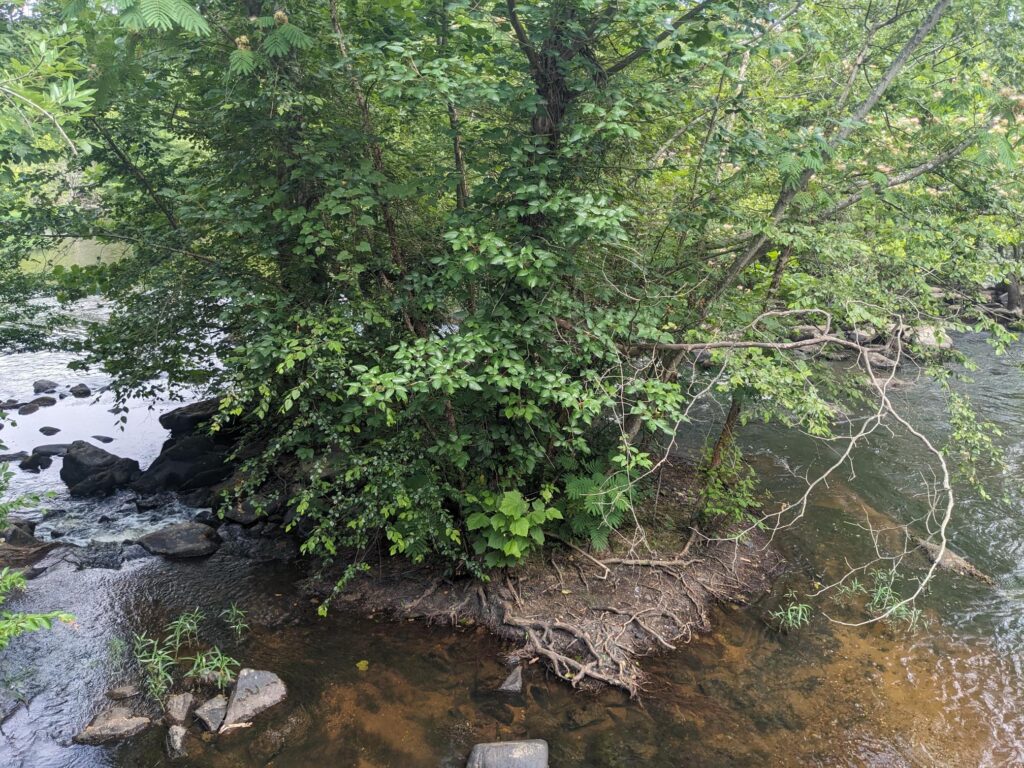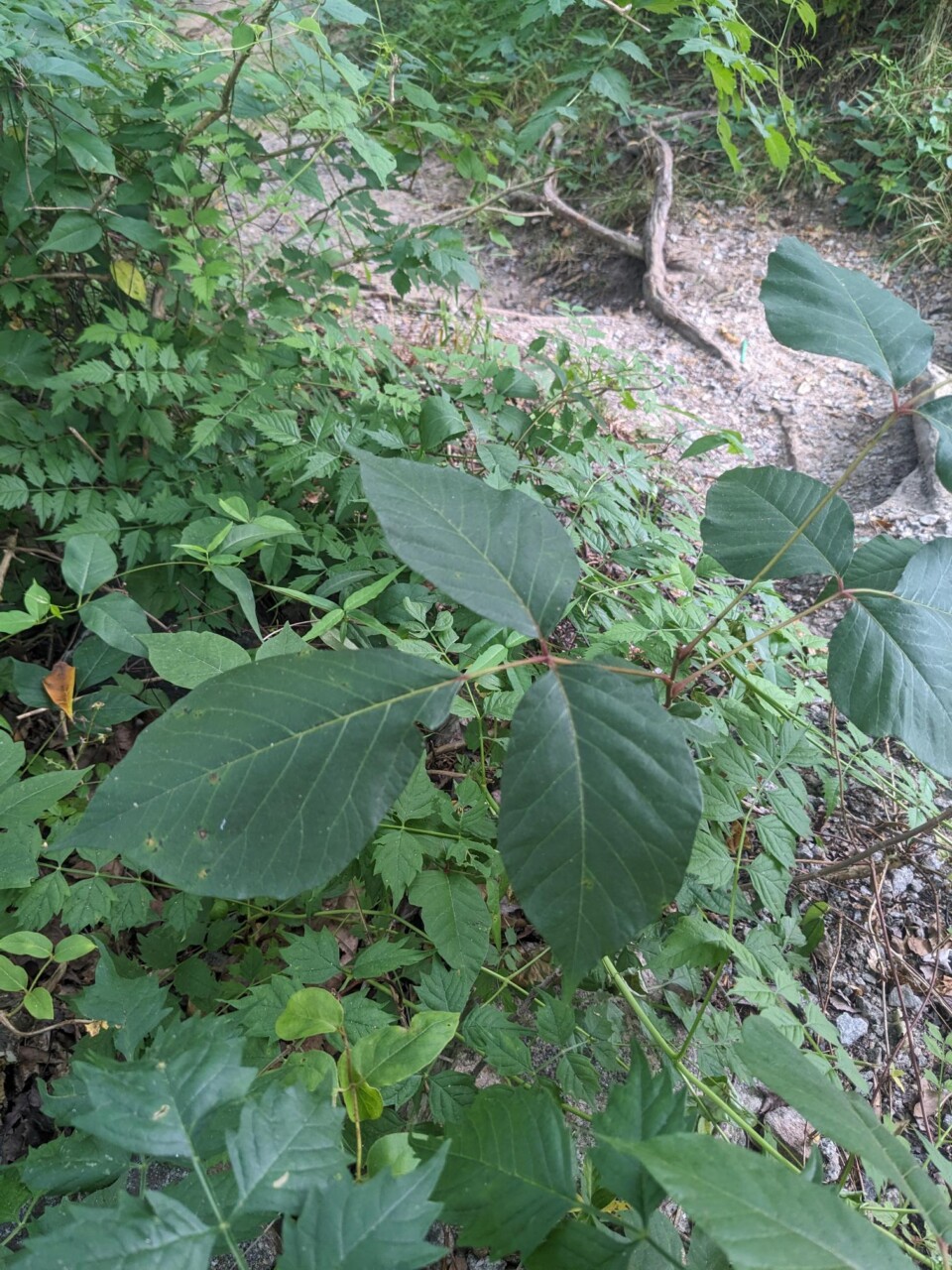By Makayla Hamlin, FOLAR Summer Intern
“Leaves of three, leave it be” rings true now more than ever as article after article is published suggesting that poison ivy thrives under the effects of climate change. It has the potential to grow bigger, stronger, and more potent. Scary, right? Before delving into why, let’s go over what poison ivy is.
Poison Ivy is a poisonous plant found all around the mainland United States. Despite the mantra, it can take on a variety of appearances, having reddish leaves in the spring, green in the summer and yellow, orange or red in autumn. It can also grow as a bush or a vine and may produce white berries.
Every part of the plant is poisonous due to a chemical it produces called “urushiol.” Urushiol, an oily resin, gives most people an allergic reaction when it contacts the skin. Symptoms include severe itching, a skin rash, blistering, and swelling. The technical term for the rash is called “contact dermatitis”.
The severity of the symptoms depends on where and how much of the resin has gotten on your skin. Typically, the rash will appear between 24-28 hours of contact and the symptoms appear in stages. Your skin will itch, the rash will appear, it will likely blister, and then crust over.
Though the rash itself is not contagious from person to person, if you touch the resin on someone else’s clothes or skin, you may be affected. The rash also does not often affect pets like dogs because of their coats, however the resin can still get on their fur, and cause their owner to have an allergic reaction. When suspecting that poison ivy is in the area, you can wear long sleeves, socks, and pants, apply a barrier cream, and most importantly, be able to identify and avoid the plant.

Let’s say you’ve taken as many precautions as you can, but still accidentally brush against poison ivy. What should you do? Find someplace where you can wash the affected area with lukewarm water and soap. This is to wash off the urushiol so it can’t spread to other places in your body. If you can, swab the area with isopropyl alcohol before washing to remove even more of the resin.
You should also wash any clothes and/or tools you were wearing or handling at the time since the resin can stick to those and reinfect you in the future. Wash your pets so they cannot reinfect you as well. To relieve the itchiness and rash, you can use home remedies like a cold compress or oatmeal baths.
Calamine lotion, corticosteroid cream, and antihistamines like Benadryl are available to buy over the counter and can relieve symptoms as well. Calamine lotion can also relieve weeping from blisters. It is strongly recommended not to scratch, since this can spread the rash and cause infection. The rash typically lasts from one to two weeks. Seek medical attention if it persists for more than a month, or if you are concerned about the state of the rash.
Now that you know what poison ivy is, prevention methods, and what to do if you do get it, how is it getting worse? In a study conducted in the late 90s and published in the early 2000s, scientists wanted to theorize how climate change would change poison ivy. They grew the plant in controlled environments with increased CO2. The findings indicated that in an atmosphere with increased CO2, the poison ivy plants would grow stronger, bigger, and more poisonous.
In 2022, another study was conducted. This time, researchers wanted to see how the plant had changed from the effects of climate change. It points out that the previous experiment was conducted under near perfect circumstances that a lot of plants do not have in the wild. Its own conclusions were much less dramatic, showing that the plant had not changed much across the last two centuries.
However, much has changed from 1824 to 2024 regarding human impact on the planet. With more carbon dioxide being pumped into the atmosphere at a rapid rate, the poison ivy plant will continue to thrive. In the future, it may very well grow bigger, stronger, and more poisonous. So, if you are out on the trail, keep your eyes open for poison ivy. It’s everywhere…
TO RECAP
If You Touch Poison Ivy:
- Swab with isopropyl alcohol
- Wash with lukewarm soap and water
- Use any number of remedies available; applying a cold compress, calamine lotion, corticosteroid cream and/or take an antihistamine or oatmeal bath to relieve itching and pain
- Wait out for the symptoms and don’t scratch!
Ways to Prevent Getting Poison Ivy (Again):
- Wear long sleeves, socks, and pants when walking the trail.
- Wash pets if you suspect you’ve been in an area with poison ivy
- Wash tools/clothes that were worn and used around poison ivy
- Educate yourself so you can identify and avoid the plant!
More Tips:
- Do not burn poison ivy. The smoke will contain the urushiol and inhaling will cause respiratory issues. The best way to remove it is to use an herbicide and thick, long gloves.
- Every part of the plant is poisonous so do not touch it at all!
RESOURCES
Poison Ivy, Poison Oak, and Poison Sumac from Cleveland Clinic
Poison Ivy Fact Sheet from University of Connecticut
Dogs and Poison Ivy from American Kennel Club
Poison Ivy Symptoms from The Mayo Clinic
When to See a Doctor for Poison Ivy by Health Grades
2022 Experiment
https://bsapubs.onlinelibrary.wiley.com/doi/10.1002/ajb2.16225







